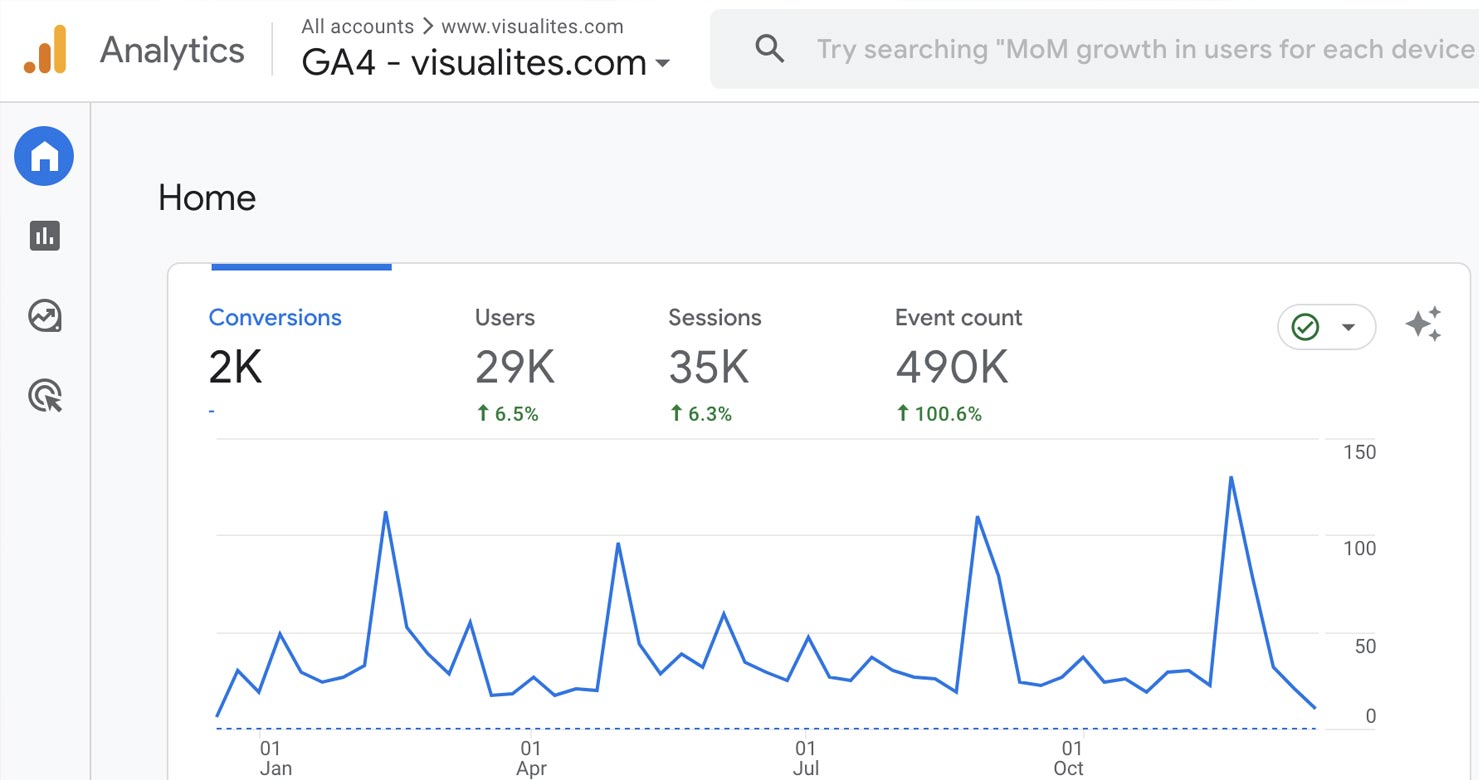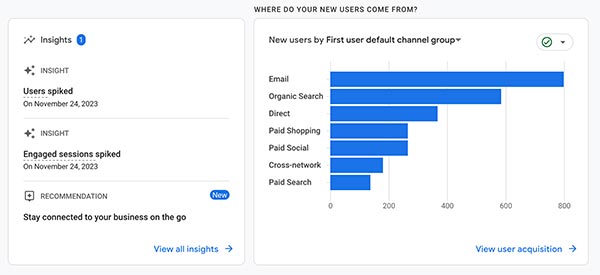
In the dynamic landscape of digital analytics, staying ahead of the curve is paramount for businesses seeking to understand and optimize their online presence. Google Analytics has long been a cornerstone for web analytics, providing valuable insights into user behavior and website performance. However, as technology evolves, so must our tools. The transition from Universal Analytics to Google Analytics 4 (GA4) is not just a mere upgrade; it’s a strategic move that holds the key to unlocking a new era of data-driven decision-making.
The Evolution of Analytics: GA4 Unveiled
Universal Analytics has been a reliable companion for marketers, analysts, and business owners, offering essential metrics and reports. However, as user expectations and digital touchpoints have expanded, Google recognized the need for a more robust and future-ready analytics solution. Enter Google Analytics 4.
GA4 represents a paradigm shift, moving away from traditional session-based tracking to an event-centric model. This means a more granular understanding of user interactions, allowing businesses to capture and analyze a wider array of data points. As users engage with websites and apps across multiple devices, GA4 enables a unified and comprehensive view of their journey.
User-Centric Focus: A 360-Degree View
One of the standout features of GA4 is its emphasis on user-centric analytics. Unlike Universal Analytics, which primarily focuses on tracking sessions, GA4 places the user at the center of analysis. This shift is particularly crucial in an era where users seamlessly transition between devices and platforms.
By consolidating data around individual users, GA4 provides a more holistic view of customer behavior. This approach enables businesses to understand the complete customer journey, from the first interaction to conversion and beyond. Marketers can then leverage this information to create more personalized and targeted campaigns, ultimately improving user engagement and conversion rates.
Enhanced Cross-Platform Tracking: Adapt to the Multi-Device Landscape
 With the prevalence of smartphones, tablets, and various other devices, users interact with digital content across a multitude of platforms. Universal Analytics struggled to seamlessly track user interactions across different devices, often resulting in fragmented data. GA4 addresses this challenge by offering enhanced cross-platform tracking.
With the prevalence of smartphones, tablets, and various other devices, users interact with digital content across a multitude of platforms. Universal Analytics struggled to seamlessly track user interactions across different devices, often resulting in fragmented data. GA4 addresses this challenge by offering enhanced cross-platform tracking.
By employing a user-centric model, GA4 effortlessly stitches together user sessions across devices. This unified view is invaluable for businesses seeking to optimize their marketing efforts across various platforms, ensuring a consistent and personalized user experience. In a world where multi-device usage is the norm, GA4’s cross-platform tracking is a game-changer.
Future-Proof Your Analytics Strategy: Stay Ahead of the Curve
The shift to GA4 isn’t merely a cosmetic upgrade; it’s a strategic decision to future-proof your analytics strategy. Google has been clear about its commitment to GA4, signaling that future enhancements and features will be exclusive to this platform. By making the transition early, businesses position themselves to take advantage of upcoming innovations and improvements.
Moreover, GA4 aligns with the evolving privacy landscape. As user privacy concerns grow and regulations become more stringent, GA4 offers advanced privacy controls and features. By prioritizing user consent and data protection, GA4 helps businesses build trust with their audience while ensuring compliance with evolving privacy standards.
Leverage Advanced Analysis and AI-driven Insights
GA4 introduces a host of advanced analysis tools and artificial intelligence-driven insights that empower businesses to make data-driven decisions with greater precision. The integration of machine learning allows GA4 to automatically identify trends, anomalies, and opportunities, reducing the manual effort required for in-depth analysis.
The new Analysis Hub in GA4 provides a flexible and intuitive interface for exploring data, creating custom reports, and gaining actionable insights. From predictive metrics to exploratory analysis, GA4 equips businesses with the tools needed to uncover valuable patterns in their data, enabling them to optimize strategies and drive success.
Making the Transition: A Step-by-Step Guide
For businesses currently relying on Universal Analytics, the prospect of transitioning to GA4 may seem daunting. However, Google has provided resources and guides to facilitate a smooth migration. The process involves setting up a new GA4 property alongside the existing Universal Analytics property, ensuring that historical data remains accessible while transitioning to the advanced capabilities of GA4.
Businesses are encouraged to start the transition process sooner rather than later, as Google continues to enhance GA4 and shift its focus away from Universal Analytics. With the right planning and implementation, the move to GA4 can be a strategic investment in the future of data analytics.
Conclusion: Embrace the Future of Analytics
In the ever-evolving landscape of digital marketing and analytics, staying ahead of the curve is not just a competitive advantage; it’s a necessity. The transition from Universal Analytics to GA4 is a strategic move that unlocks a wealth of opportunities for businesses willing to embrace the future of analytics.
From a user-centric approach and enhanced cross-platform tracking to advanced analysis tools and AI-driven insights, GA4 represents a significant leap forward in the world of digital analytics. By making the transition now, businesses position themselves to harness the power of data in new and exciting ways, ultimately driving success in an increasingly digital and data-driven world.

